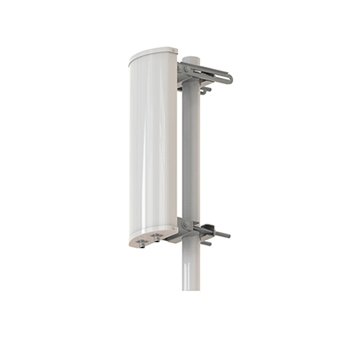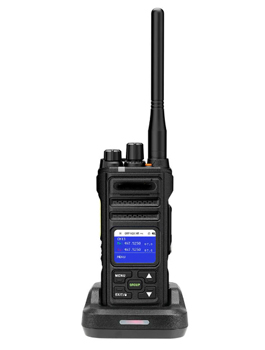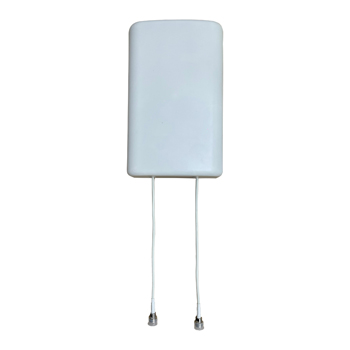This article will discuss about the different use cases and advantages and disadvantages of omni-directional and sector antennas. Omni-directional and sector antennas are some of the most important antennas when considering power, and specific directivity requirements.
First, we will briefly understand the importance of antenna technology in modern communication systems. The development of antenna technology is one of the driving factors in modern communication systems. Over the years different types of antennas have evolved. The development of different types of antennas is driven by the following factors:
- Communication frequency range
- Nature of the terrain
- Range of communication
- Power, noise immunity and directivity requirements
Depending on the aforementioned factors, there are different types of antennas catering to different purposes. In this regard, the omni-directional antenna can provide over all directions, with an ideal coverage of 360 degrees while sector antennas typically restrict the coverage to a certain area with much power. We will formally discuss their advantages and disadvantages in this short article in the upcoming sections.
Table of Contents
ToggleWhat is omnidirectional antenna?
An omni-directional antenna is an antenna with directivity in all directions. Directivity refers to the ability of the antenna to transmit radio signals to a given direction with maximum power. Omni-directional antennas can transmit and receive radio signals over 360-degree coverage. These antennas are widely used in Wi-Fi systems, cellular networks, and radio systems. In more modern applications such as V2X communication systems, omnidirectional antennas play a crucial role in enabling sensing and localization capabilities of the surroundings. Moreover, omni-directional antennas are used in IoT applications to facilitate communication protocols such as LoRaWAN, Zigbee, etc.
Now let us discuss several advantages and disadvantages of omni-directional antennas. The advantages and disadvantages of omni-directional antennas depend on the application, terrain used, and communication links involved. However, we will discuss the advantages and disadvantages in a more general perspective.
Some of the advantages of omni-directional antennas include:
- 360 degree coverage: The omni-directional antenna is capable of transmitting and receiving signals in all directions with maximum power
- Easy installation: These antennas are easy to install with a minimal setup when compared to sector antennas.
- Versatile applications: Due to the omni-directional nature of these antennas, they are used in a variety of different applications from cellular networks to V2X networks.
- Low cost: Omni-directional antennas are cost effective solutions for low power applications
- Mobility: These antennas are widely used in different applications where mobility is crucial due to their small size and easy-to-install setup
Some of the disadvantages of omni-directional antennas are as follows:
- Susceptible to interference: Omni-directional antennas are exposed to multi-path interference and, therefore are considered unreliable.
- Lower gain: Due to their omni-directional directivity, these antennas can facilitate only a partial gain in each direction.
- Low penetration capability: Due to their low gain, these antennas’ signal radiation has low penetration capability
When to use omni-directional antennas?
Omni-directional antennas are used in applications that require coverage in all directions. These applications include:
- Cellular networks: These networks require better coverage and hence are facilitated by means of omni-directional antennas
- V2X networks: Omni-directional antennas play a crucial role in V2X networks, as it is necessary to locate and sense in every direction
- Wi-Fi and Bluetooth antennas: Omni-directional antennas are also widely used in these networks, as the coverage range of such networks is minimal, however they require coverage in every direction
What can Tesswave do for you?
Tesswave provide 100+ antenna products and you can contact us for antenna customized solutions, get in touch with us today to get a Free quote.
Get an Instant Quote
Get a FREE quote and we will contact you within an hour
What is sector antenna?
Compared to an omni-directional antenna, a sector antenna is a directional antenna with limited directivity to a given direction. In other words, sector antennas will cover only a certain angle of coverage rather than the 360-degree coverage provided by the omni-directional antennas. These antennas are widely used in Wi-Fi networks, and cellular networks in applications that require constrained coverage over a given area of interest. Unlike omni-directional antennas, sector antennas have feed elements arranged in a specific pattern. Moreover, sector antennas are widely used in outdoor environments when compared to omni-directional antennas.
Let us now discuss the advantages and disadvantages of sector antennas in general applications. The advantages of sector antennas include:
- High directional signal gain: The main advantage of sector antennas is their high directional signal gain. It is the ability of the antenna to focus on a given direction with maximum power.
- Less interference: Due to the high directional signal gain, these antennas are susceptible to interference caused by other radio signals in the surroundings.
- Scalability: Sector antennas can be used to cover a large area by scaling the antenna elements accordingly to cover a large area
- Wider coverage range: Compared to omni-directional antennas, sector antennas can cover a broad range as they focus on the specific regions of interest.
Now let us investigate some of the disadvantages of sector antennas.
- Limited coverage: Sector antennas, when compared to omni-directional antennas, have limited coverage.
- Complex installation: Unlike omni-directional antennas, sector antenna requires more antenna elements, and proper study before installation
- Relatively high cost: When compared to omni-directional antennas, sector antennas incur more cost
When to use sector antenna?
Sector antennas are widely used in applications that require high directional gain and low interference in each direction. These applications include:
- Point to multipoint communication systems: Sector antennas are used to communicate between central nodes and multiple users in different sectors
- Wi-Fi networks: These antennas are used for outdoor Wi-Fi systems that require high gain
- Cellular networks: Sector antennas are used for cellular networks in places that require high directional gain
Difference between omni-directional antennas and sector antennas
The main difference between the omni-directional and sector antennae is that the former is aimed at providing 360-degree coverage while the latter is focused on a constrained angle of coverage. Moreover, an omni-directional antenna is desired in rural and open environments while sector antennas are preferred in urban environments. Finally, omni-directional antenna is preferred for small and indoor networks, whereas sector antennas are preferred in commercial and large networks.
Conclusion
In this short article, we discussed the advantages and disadvantages of two different types of antennas: omni-directional and sector antennas. Furthermore, we also identified the main use cases of each antenna type and their differences. This article can be used as a reference when selecting the most suitable antenna type for your application.








